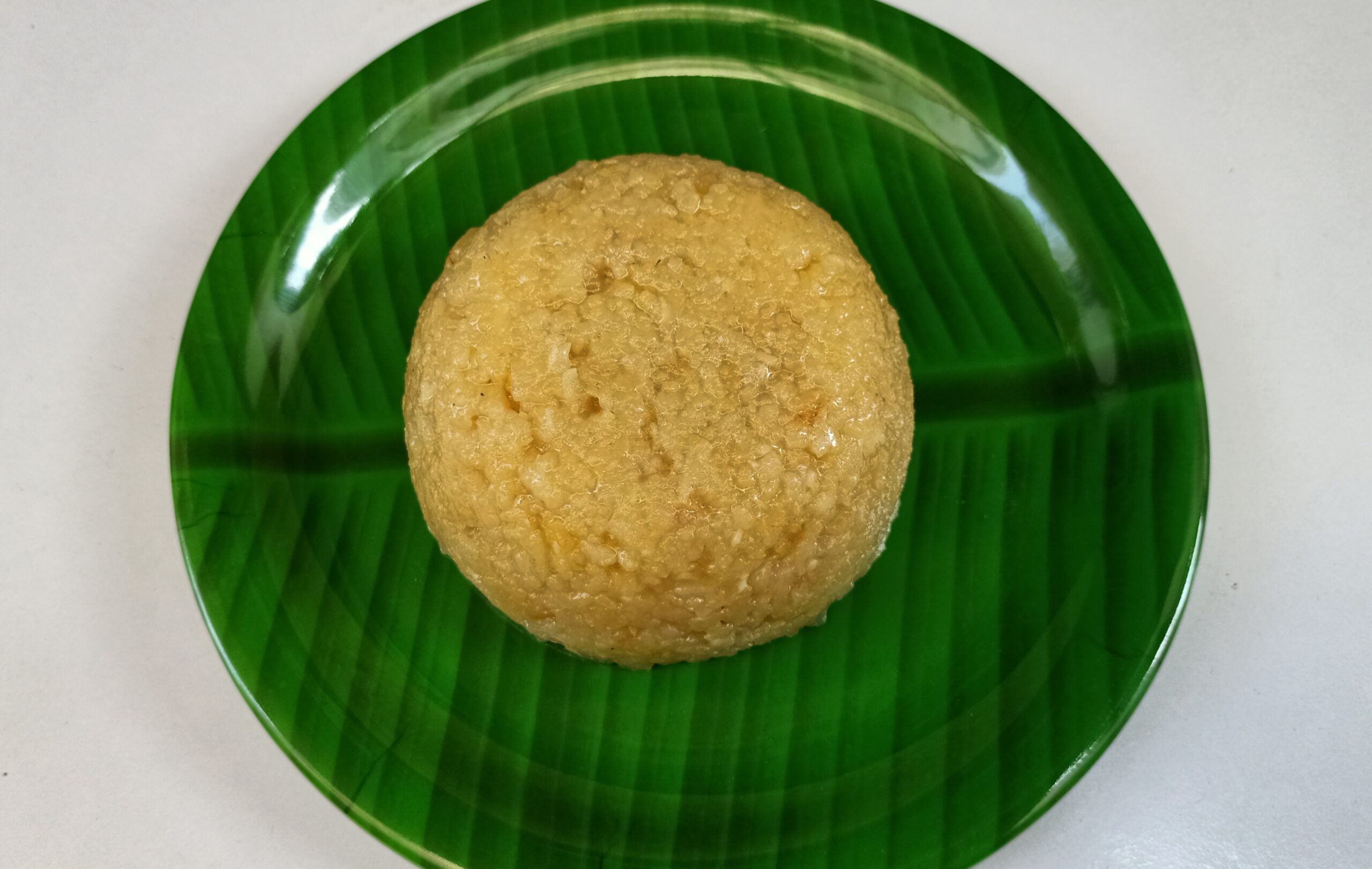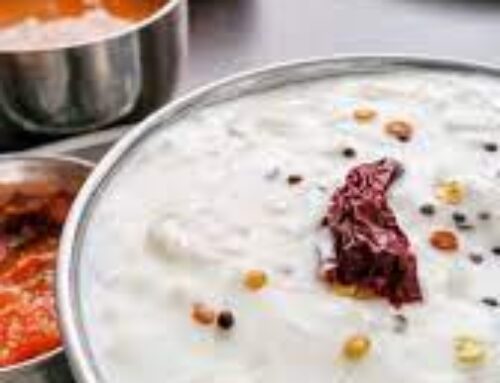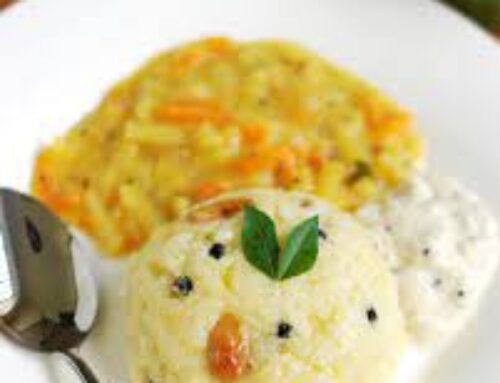Sweet Pongal, additionally referred to as Sakkarai Pongal or Chakkara Pongal in South Indian languages, is a delightful creamy porridge-like dish made with rice, yellow moong lentils, jaggery, and infused with the fragrant essence of inexperienced cardamoms, cashews, raisins, and ghee. This liked festive dish is a staple during the Pongal Festival in South India.
About Sweet Pongal
Among the array of South Indian temple services that we cherish, Sweet Pongal holds a special vicinity along Ven Pongal, Curd Rice, Tamarind Rice, and Paal Payasam. Having savored these treats as prashad (naivdeyam) in severa South Indian temples, I have grown fond of their flavors.
Sweet Pongal entails the aggregate of cooked rice and yellow moong lentils sweetened with jaggery, which imparts a one-of-a-kind molasses-like taste. The aromatic profile of this delicacy is in addition enriched with the addition of inexperienced cardamom powder, along with crunchy cashews and succulent raisins.
During rituals or auspicious activities, I prepare goodies to provide to the Mother Goddess. It’s a culture in our family to include a pinch of safe to eat camphor in those services, although it is absolutely optional.
Similarly, I contain clove powder into both savory and candy dishes as an homage to the Devi, following the footsteps of my mom and mother-in-regulation. Hence, in this Chakkara Pongal recipe, I’ve opted to consist of a touch of clove powder, though its addition stays non-compulsory.
Sweet Pongal can be prepared the use of either a stovetop pressure cooker or an Instant Pot, with the latter being in particular convenient for larger portions.
Below, I define the approach for making Sweet Pongal in a stovetop stress cooker, accompanied by means of step-by means of-step photographs, together with the Instant Pot technique.
How to Make Sweet Pongal
To make certain clarity and ease of comprehension, I’ve based the complete Sweet Pongal recipe into six truthful steps. This division pursuits to simplify the cooking method for you.
Roasting Rice and Moong Dal:
1. Begin with the aid of meticulously sorting ½ cup of rice and ⅓ cup of moong dal to ensure there aren’t any stones or particles. Then, warmness a small pan or kadai and add both the rice and moong lentils.
2. Over low warmth, stirring frequently, roast the rice and moong lentils till they release a aromatic aroma. It’s critical to display closely to save you over-browning.
3. Focus on roasting the moong lentils till they come to be aromatic; there may be no want to brown them excessively.
Four. Transfer the roasted rice and lentils to a separate bowl or strainer.
Five. Rinse each the roasted rice and moong dal very well with sparkling, clean water.
Cooking Rice and Moong Lentils:
6. After draining well, region each the rice and lentils into a 3-liter stress cooker. Add three cups of water, adjusting the amount primarily based on your chosen consistency and the type of moong dal used.
7. For most styles of moong lentils, stress cook dinner for eight to 9 whistles on medium warmth. This commonly calls for around three or 3.25 cups of water.
8. Allow the stress cooker to whistle for 11 to 12 minutes on medium heat. Once the pressure subsides certainly, cautiously open the lid. Check if the rice and lentils have cooked thoroughly and seem tender.
Tip: If the rice and lentils have a separate texture corresponding to pulao, mix in ½ to one cup of hot water very well.
9. Both the rice and moong dal ought to be very well cooked and smooth. Use a spoon to gently mash them to make sure right consistency, comparable to that of khichdi. Once cooked, cowl with the lid and set aside.
10. While the rice is cooking, weigh down the seeds of 5 inexperienced cardamoms and 1 clove using a mortar and pestle. These may be used as flavorings later in the recipe.
If you are choosing inexperienced cardamom powder on my own, contain ½ teaspoon of it into the mix.
Prepare Jaggery Syrup:
11. Begin by chopping one hundred fifteen to a hundred and twenty grams of jaggery, yielding about ½ cup of tightly packed chopped or grated jaggery. This quantity imparts simply the proper amount of sweetness to the sakkarai pongal. For a sweeter taste, you may upload an extra ¼ cup.
Occasionally, I utilize natural jaggery powder, including it directly to the cooked rice and moong lentils.
Tip: If your jaggery or jaggery powder is free from impurities, it may be added without delay to the cooked rice and lentils mixture.
12. Pour ½ cup of water right into a pan and add the chopped jaggery.
13. Over low to medium heat, heat the jaggery solution till the jaggery absolutely dissolves.
14. Stir constantly and ruin down any jaggery chunks or portions with a spatula or spoon to facilitate easy melting.
15. Allow the syrup to bubble gently. If the usage of darkish jaggery, the syrup will collect an amber color upon entire melting. Lighter jaggery types will yield a light yellow to yellow hue. Adjust thickness according to choice.
Sweeten Rice and Lentils:
sixteen. Strain the jaggery syrup through a first-rate mesh or tea strainer without delay into the cooked rice and lentils mixture. If the usage of organic jaggery powder, add it immediately.
17. Incorporate the crushed cardamom and clove powder, together with an non-obligatory pinch of suitable for eating camphor.
18. Thoroughly integrate all elements. Note that the chakkara pongal will thicken upon cooling. If the combination appears too thick, add ¼ to ⅓ cup of hot water.
Fry Cashews and Raisins:
19. Heat four to five tablespoons of ghee in a pan, adjusting the amount based on choice.
20. Add 12 to 15 cashews, whole or halved, and fry until they turn mild golden.
21. Introduce 1 tablespoon of raisins to the pan.
22. Stir continuously to calmly coat the cashews and raisins in ghee.
23. Fry till the raisins swell and grow to be plump, making sure to stir frequently for even cooking.
Making Sweet Pongal:
24. Immediately after doing away with the pan from the stovetop, upload the fried cashews, raisins, and ghee to the cooked rice and lentils.
25. Thoroughly blend all the substances.
26. Offer the organized Sweet Pongal to the Goddess or serve it hot or heat in your circle of relatives participants. You can garnish the sakkarai pongal with some of the fried cashews and raisins at the same time as serving.
Authentic Tamil Nadu Ven Pongal: A Taste of Tradition
https://tastesy.in/recipes/authentic-tamil-nadu-ven-pongal-a-taste-of-tradition/
Variations:
With Milk: Some variations of Sweet Pongal contain milk, presenting a richer and creamier texture. You can substitute water with milk in this recipe to attain this variation.
With Sugar: While jaggery is the traditional sweetener used in sakkarai pongal, you could update it with raw sugar, white sugar, coconut sugar, or palm sugar for special flavor profiles.
Healthy Ingredients: While rice and moong lentils are the standard elements in Sweet Pongal, you may test with options inclusive of cracked wheat (dalia), millets, or oats to feature range and nutritional blessings.
for more information-https://en.wikipedia.org/wiki/Pongal_(dish)
How to Make Sweet Pongal in an Instant Pot:
Follow those steps to prepare Sweet Pongal in your Instant Pot:
1. Begin with the aid of roasting the rice and lentils one after the other in a frying pan or skillet. Rinse them very well with water afterwards.
2. Add the rinsed rice and lentils to the steel insert of a 6-quart Instant Pot.
3. Pour three.5 cups of water and strain cook dinner on high pressure for six to 7 minutes. Perform a quick stress launch after 10 to 12 mins.
Four. If the consistency appears thick or the grains are separate, upload a few water. Press the sauté button to simmer the mixture for a few minutes.
5. Add the ground cardamom and clove powder. Prepare the jaggery syrup and contain it into the combination. Fry the cashews and raisins one by one, then mix them with the cooked rice and lentils. Serve the Sweet Pongal warm or warm.
Expert Tips:
Ingredient Notes:
Sweeteners: Jaggery lends a lovely earthy, molasses-like taste to sakkarai pongal. If jaggery is unavailable, you can substitute it with uncooked sugar, white sugar, palm sugar, or coconut sugar in identical quantities. Each sweetener offers a completely unique flavor to the dish.
Preparing Sweet Pongal:
Variations:
With Milk: Certain versions of Sweet Pongal comprise milk to create a richer, creamier texture. To obtain this modification, update water with milk inside the recipe.
With Sugar: While jaggery is the traditional sweetener for sakkarai pongal, you could change it with uncooked sugar, white sugar, coconut sugar, or palm sugar to discover one of a kind flavor profiles.
Healthy Ingredients: While rice and moong lentils are normal in Sweet Pongal, you can test with options like cracked wheat (dalia), millets, or oats to introduce range and beautify dietary price.






